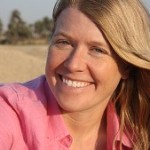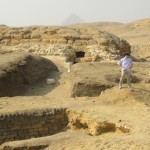24 Settembre 2019
Riproponiamo la pagina del 2015 dedicata al “Capo Circeo” Sara Parcack, poi TED, al pari del Primo Ministro scozzese, UK, Nicola Sturgeon.
La riproposizione del Premo assegnato a Sara Parcak è molto importante al fine di stimolare le autorità accademiche e di governo italiane e europee ad aggiornare i curriculi universitari e di specializzazione e master dei laureati in Archeologia con l’introduzione di discipline attinenti lo studio e l’applicazione su campo della fotografia e dei rilevamenti aerospaziali. La Prof. Sara Parcak, che fra l’altro ha individuato il faro di Ostia e altre rilevanti particolarità del territorio dell’antica Roma e del so limes sahariano e in Dacia di quello pontico, ha offerto contributi spettacolari al rapido progresso della ricerca archeologica più sofisticata non soltanto nel contesto delle civiltà antiche del mondo pan mediterraneo quanto pure di altre e diversissime aree geografiche terrestri, dall’Asia all’America e di periodi storici più recenti. Non poche pagine della storia antica possono già essere riscritte con più precisione e con maggiore dovizia topografica. La messe degli ulteriori risultati ottenuti con gli scavi archeologici grazie a questa tecnologia presenta vere miniere d’oro portate e da portare alla luce lungo tutto l’arco della ricerca archeologica archeologica.
L’applicazione su larga scala delle più avanzata tecnologie in archeologia consentirà il progresso delle conoscenze in misura incommensurabile.
*****
***
Aggiornamenti sui Premiati
28 Dicembre 2015
Fonti: direttamente citate nel testo
Российский режиссер Ефим Резников получил международную премию «Европа – Мыс Цирцеи»
*****
***
PECC 2013
Ümit Boyner’e ‘Avrupa ödülü’üü
www.finansgundem.com
Read more: http://www.finansgundem.com/haber/umit-boyner_e-_avrupa-odulu/525857#ixzz40zYDL5oj
*** our strength comes from our customers – United Nations … https://www.unglobalcompact.org/system/…/BYP_FRAE_2013.pdf?…
The Financial Times
Turkey government at odds with big business – FT.com www.ft.com › reports
*****
***
2016 TED Prize winner
The wish
Global Xplorer
The winner
Sarah Parcak
The year
TED2016
****
***
****
CNN: Lauren Said-Moorhouse intervista intervista Sarah Parnack
Space archaeologist Sarah Parcak wins $1M 2016 TED …
www.cnn.com/…/space-archaeologist-sarah–parcak… Updated 1738 GMT (0138 HKT) November 10, 2015 Copia cacheTraduci questa pagina 10 nov 2015 – Dr Sarah Parcak uses satellite technology to unearth Egypt’s ancient settlements, pyramids and palaces lost in the sands of time.
****
***
****
FORBES / SCIENCE
http://www.forbes.com/
Nov 9, 2015 @ 08:00 AM 23,270 views
Space Archaeologist Sarah Parcak Wins $1 Million TED Prize To Find And Preserve Ancient Sites
I write about archaeology, anthropology, and the classical world.
Archaeologist Sarah Parcak, a specialist in Egyptology at the University of Alabama at Birmingham, has just been announced as the 2016 TED Prize winner. An annual award, the TED Prize goes to just one exceptional person who uses the funding to launch a high-impact project. And at the 2016 TED conference in February, Parcak will be discussing her project, which will include identifying and protecting archaeological sites in the Middle East and around the globe using satellite imagery. She’s been called a space archaeologist, as Parcak uses satellite imagery beamed down from just outside Earth’s orbit to see archaeological sites that have been lost to time. But she doesn’t just browse Google GOOGL +0.94% Earth and decide where to stick her trowel in the ground. Parcak’s work involves infrared imagery to see more than is possible with the human eye, as well as advanced computer
South Dashur ground looting. This visit was done with full permission of Egypt’s Ministry of Antiquities and the support of HE Minister of Antiquities Dr Mamdouh el Damaty. This entire area was virtually unlooted prior to 2011 but is now heavily looted. Tombs are from mixed time periods (Old Kingdom-Late Period). In this image, Sarah Parcak stands for scale in the middle of an area that looters totally exposed. (Image taken in December 2014 by Greg Mumford and Sarah Parcak, and used with permission.)
Many of Parcak’s colleagues from around the world are lauding her past work and are excited to learn more about the development of her new TED-funded project. Archaeologist Rachel Opitz of the Center for Advanced Spatial Technologies at the University of Arkansas told me that Parcak’s work “has been important in promoting the use of aerial imagery to identify and monitor archaeological remains, particularly in Egypt and the Middle East. Her projects raise awareness of both the diversity and richness of the archaeological landscapes in these areas and the current threats to their preservation.” Archaeologist Arlen Chase, …..
According to a TED press release, Parcak insists that being named the 2016 TED Prize recipient is “not about me; it’s about our field – and the thousands of men and women around the world, particularly in the Middle East, who are defending and protecting sites. The last four and a half years have been horrific for archaeology. I’ve spent a lot of time, as have many of my colleagues, looking at the destruction. I am committed to using this Prize to engage the world in finding and protecting these global sites.” This is perhaps the first time that an archaeologist has been part of a list of award recipients …..
per la lettura integrale del testo, entrare nel sito d’origine.
*****
***
*****
Chi è l’archeologa che, dichiarando guerra ai tombaroli, ha vinto il TED Prize 2016
Indiana Jones hi-tech. Questo è l’appellativo che Sarah Parcak, 36 anni, si è conquistata per i suoi successi in ambito archeologico. Successi che le sono valsi il prestigioso TED Prize 2016 e il milione di dollari che viene messo in palio ogni anno.
Sarah, oltre a ricoprire una prestigiosa cattedra all’Università dell’Alabama, è riconosciuta come uno dei pionieri dell’archeologia moderna. Unendo tradizione e nuove tecnologie, infatti, è riuscita a scoprire e proteggere siti che oggi, senza i suoi studi, non conosceremmo.
Il team guidato da Sarah si serve di immagini satellitari a infrarossi, fornite anche dalla NASA, per riuscire a identificare quei luoghi che hanno più bisogno di essere preservati e difesi. Foto che vengono scattate da un’altezza superiore ai 700 chilometri (450 miglia).
Ad esempio, sfruttando questo tipo di tecnologie, è stato possibile mappare, solo in Egitto, 17 piramidi, 1000 tombe e oltre 3000 insediamenti sconosciuti. Ma non solo. Lavorando sui big data raccolti, infatti, è possibile avere un quadro più completo delle caratteristiche di un determinato luogo prima di pianificare un eventuale intervento.
Combattere i tombaroli
Ma il lavoro di Sarah, oltre a …..
L’uso dei droni …..
per la lettura integrale del testo, entrare nel sito d’origine.
@ilmercurio85




